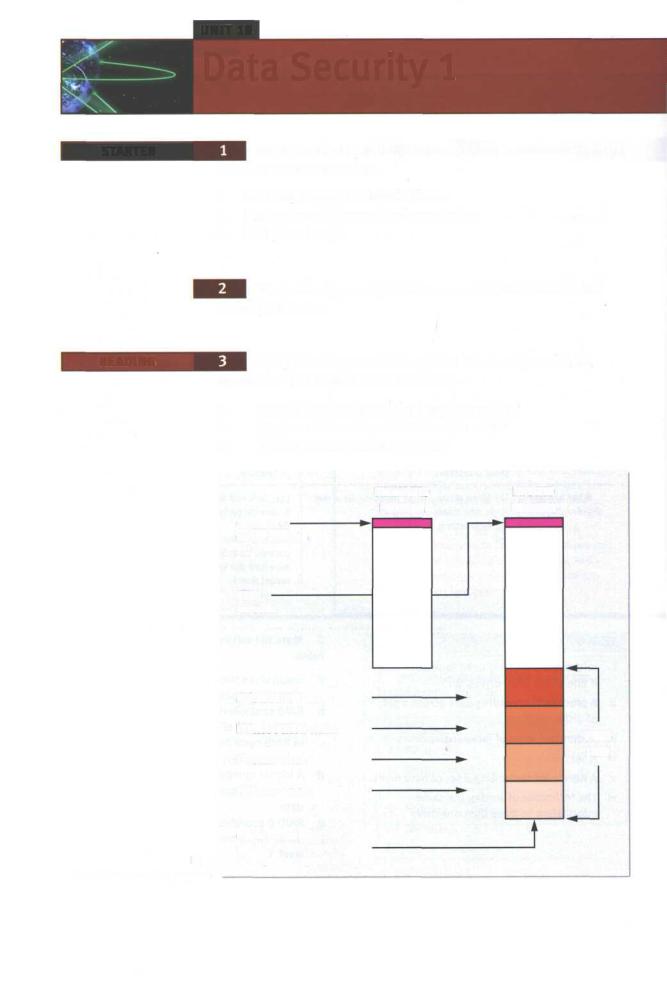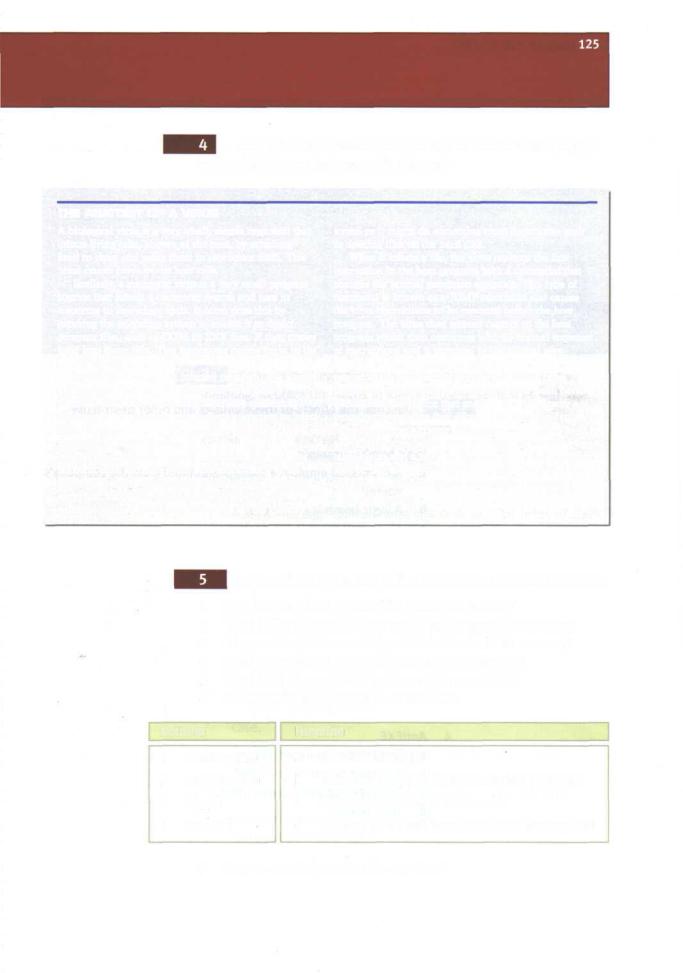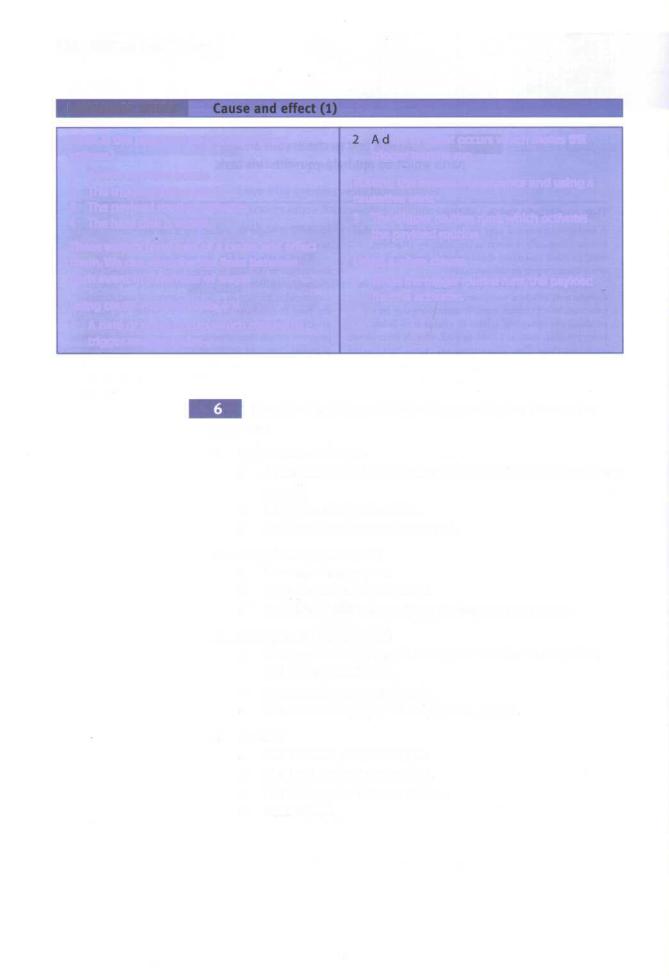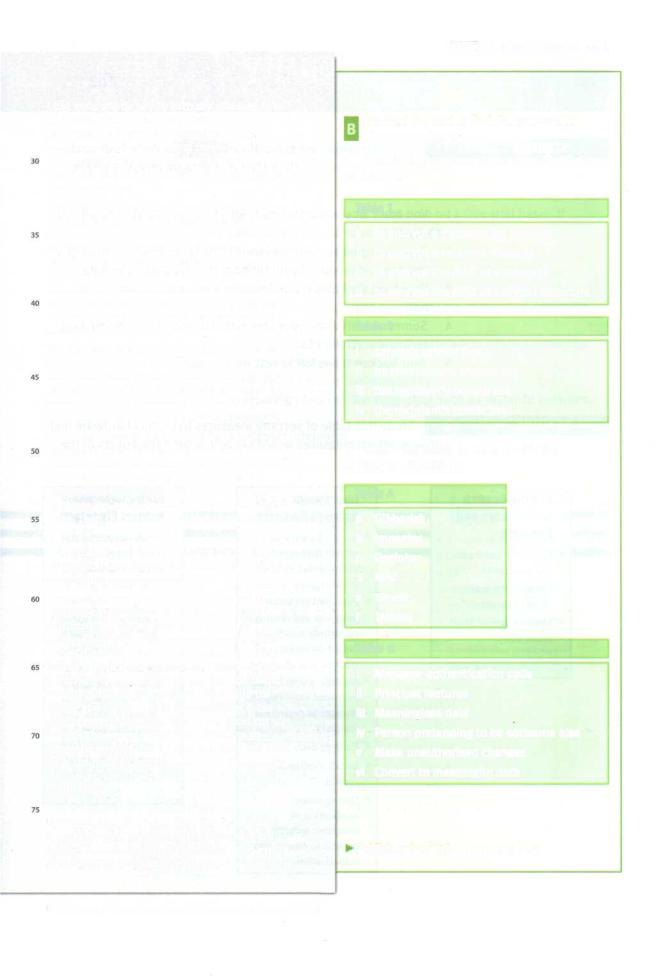
Oxford_English_for_Information_Technology / Text / unit18
.pdf
UNIT 18
Data Security 1
STARTER |
What stories do you think followed these headlines? Compare |
answers within your group. |
|
1 |
Love bug creates worldwide chaos. |
2 |
Hackers crack Microsoft software codes. |
3 |
Web phone scam. |
What other types of computer crime are there? Make a list within your group.
READING |
Study this diagram which explains how one type of virus |
operates. Try to answer these questions. |
|
1 |
What is the function of the Jump instruction? |
2 |
What are the main parts of the virus code? |
3 |
What is the last act of the virus? |
UNINFECTED |
INFECTED |
PROGRAM |
PROGRAM |
ORIGINAL |
|
starting instruction |
|
JUMP |
|
instruction |
|
|
MISDIRECTION routine |
|
|
REPRODUCTION routine |
VIRUS |
|
|
|
|
TRIGGER routine |
CODE |
|
|
|
|
PAYLOAD routine |
|
|
original starting instruction, |
|
|
plus code to return control to |
|
Fig 1 |
the program as originally written |
|
How a virus infects a program |
|
|

Scan this text to check your answers to Task 3. Ignore any parts which do not help you with this task.
THE ANATOMY OF A VIRUS
A biological virus is a very small, simple organism that infects living cells, known as the host, by attaching itself to them and using them to reproduce itself. This often causes harm to the host cells.
Similarly, a computer virus is a very small program routine that infects a computer system and uses its resources to reproduce itself. It often does this by patching the operating system to enable it to detect program files, such as COM or EXE files. It then copies itself into those files. This sometimes causes harm to the host computer system.
When the user runs an infected program, it is loaded into memory carrying the virus. The virus uses a common programming technique to stay resident in memory. It can then use a reproduction routine to infect other programs. This process continues until the computer is switched off.
The virus may also contain a payload that remains dormant until a trigger event activates it, such as the user pressing a particular key. The payload can have a variety of forms. It might do something relatively harmless such as displaying a message on the monitor
screen or it might do something more destructive such as deleting files on the hard disk.
When it infects a file, the virus replaces the first instruction in the host program with a command that changes the normal execution sequence. This type of command is known as a JUMP command and causes the virus instructions to be executed before the host program. The virus then returns control to the host program which then continues with its normal sequence of instructions and is executed in the normal way.
To be a virus, a program only needs to have a reproduction routine that enables it to infect other programs. Viruses can, however, have four main parts. A misdirection routine that enables it to hide itself; a reproduction routine that allows it to copy itself to other programs; a trigger that causes the payload to be activated at a particular time or when a particular event takes place; and a payload that may be a fairly harmless joke or may be very destructive. A program that has a payload but does not have a reproduction routine is known as a Trojan.
Now read the whole text to find the answers to these questions.
1How are computer viruses like biological viruses?
2What is the effect of a virus patching the operating system?
3Why are some viruses designed to be loaded into memory?
4What examples of payload does the writer provide?
5What kind of programs do viruses often attach to?
6Match each virus routine to its function.
Routine |
Function |
||
1 |
misdirection |
a |
does the damage |
2 |
reproduction |
b |
attaches a copy of itself to another program |
3 |
trigger |
c |
hides the presence of the code |
4 |
payload |
d |
decides when and how to activate the payload |
7 How does a Trojan differ from a virus?

126 UNIT 18 Data Security 1
LANGUAGEWORK
What is the relationship between these actions?
1A date or event occurs.
2The trigger routine runs.
3The payload routine activates. 4 The hard disk is wiped.
These events form part of a cause and effect chain. We can describe the links between each event in a number of ways:
Using cause + to V or make + V.
1 A date or event occurs which causes the trigger routine to run.
ate or event occurs which makes the trigger routine run.
Putting the events in sequence and using a causative verb.
3The trigger routine runs, which activates the payload routine.
Using a when clause.
4When the trigger routine runs, the payload routine activates.
Describe the effects of these viruses and other destructive programs.
1 logic bomb-example
aA dismissed employee's name is deleted from the company's payroll.
bA logic bomb is activated.
cAll payroll records are destroyed.
2Form (Boot sector virus) a A certain date occurs.
b A trigger routine is activated.
c Keys beep when pressed and floppies are corrupted.
3Beijing (Boot sector virus)
aThe operator starts up the computer for the one hundred and twenty-ninth time.
bA trigger routine is activated.
cThe screen displays, 'Bloody! June 4,1989'.
4 AntiEXE
aThe infected program is run.
bThe boot sector is corrupted.
cThe disk content is overwritten.
dData is lost.

UNIT 18 Data Security 1 127
5Cascade (File virus - COM files only) a A particular date occurs.
b The payload is triggered.
c Characters on a text mode screen slide down to the bottom.
6macro virus-example
a An infected document is opened in the word processor.
bThe virus macro is executed.
cThe virus code is attached to the default template.
dThe user saves another document.
eThe virus code attaches to the saved document.
fThe saved document is opened in the wordprocessor.
gThe virus destroys data, displays a message or plays music.
Some verbs beginning or ending with en have a causative meaning. Replace the words in italics in these sentences with the appropriate form of en verb from this list.
enable |
encrypt |
ensure |
encode |
enhance |
brighten |
encourage |
enlarge |
widen |
1A MIDI message makes sound into code as 8-bit bytes of digital information.
2The teacher is using a new program to give courage to children to write stories.
3The new version of SimCity has been made better in many ways.
4 A gateway makes it possible for dissimilar networks to communicate.
5You can convert data to secret code to make it secure.
6Make sure the machine is disconnected before you remove the case.
7Designers can offer good ideas for making your website brighter.
8Electronic readers allow you to make the print size larger.
9Programmers write software which makes the computer able to carry out particular tasks.
10 You can make the picture on your monitor wider.

128 UNIT 18 Data Security 1
PROBLEM-SOLVING |
Decide in your group what these kinds of computer crime are. |
Then match the crimes to the short descriptions which follow. |
|
1 |
Salami Shaving |
2 Denial of Service attack |
|
3 |
Trojan Horse |
4 |
Trapdoors |
5 |
Mail bombing |
6 |
Software Piracy |
7 |
Piggybacking |
8 |
Spoofing |
9 |
Defacing |
10 |
Hijacking |
a |
Leaving, within a completed program, an illicit program that |
|
allows unauthorised - and unknown - entry. |
b |
Using another person's identification code or using that person's |
|
files before he or she has logged off. |
c |
Adding concealed instructions to a computer program so that it |
|
will still work but will also perform prohibited duties. In other |
|
words, it appears to do something useful but actually does |
|
something destructive in the background. |
d |
Tricking a user into revealing confidential information such as an |
|
access code or a credit-card number. |
e |
Inundating an email address with thousands of messages, |
|
thereby slowing or even crashing the server. |
f |
Manipulating programs or data so that small amounts of money |
|
are deducted from a large number of transactions or accounts |
|
and accumulated elsewhere. The victims are often unaware of |
|
the crime because the amount taken from any individual is so |
|
small. |
g |
Unauthorised copying of a program for sale or distributing to |
|
other users. |
h Swamping a server with large numbers of requests. |
|
i |
Redirecting anyone trying to visit a certain site elsewhere. |
j |
Changing the information shown on another person's website. |

SPEAKING
WRITING
UNIT 18 Data Security 1 129
Work in pairs, A and B. You both have details of a recent computer crime. Find out from your partner how his/her crime operated and its effects. Take notes of each stage in the process.
Student A Your computer crime is on page 187.
Student B Your computer crime is on page 193.
Using your notes from Task 9, write an explanation of the computer crime described by your partner. When you have finished, compare your explanation with your partner's details on page 187 or
193.
WHEN YOU HAVE FINISHED THE READING SECTION ON THE FOLLOWING PAGES,
COME BACK TO THESE ADDITIONAL EXERCISES
3 Mark each of the following statements with True or False:
aA message encrypted with a public key can be decrypted by anyone.
bTo send a secure message you must know the recipient's public key.
cSecure messages are normally encrypted using a private key before they are sent.
dA message can be reconstructed from its MAC.
eTwo message can often have the same MAC.
fA digital certificate is sent to a client in an encrypted form.
gA digital certificate should be signed by a trusted digital-certificate issuer.
hA MAC is used to check that a message has not been tampered with.
4 Put the following sentences, about sending a secure email, in the correct order:
aThe message is decrypted with the recipient's private key.
bThe message is received by the recipient.
cThe message is encrypted with the recipient's public key.
dThe message is sent by the sender.


